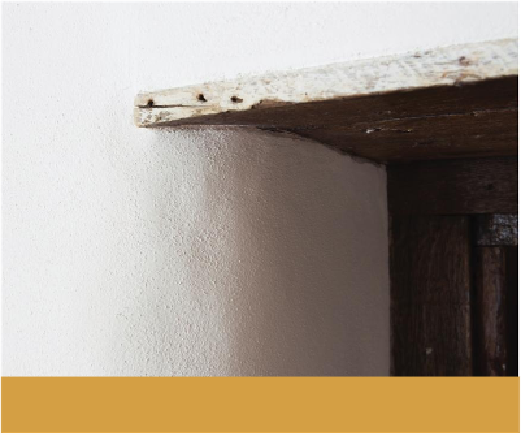Civil Engineering Reference
In-Depth Information
Corner reinforcement
Protruding corners (both internal and external) require reinforcement, since they are vul-
nerable to knocks. This can be achieved with purpose-made corner beads, usually of stain-
less steel or PVC with 'wings' of glass-fibre mesh to locate the bead and attach it into the
plaster. Some of these are designed to be completely concealed under the topcoat, which
means you don't see the plastic or steel running down the corner. Mesh wing corner beads
are sometimes supplied on a roll, folded down the middle. This reduces waste, as you can
cut it to the length you require, and the pre-folded corner means you can open this out to
any angle you want. This kind of flexible bead is useful for hempcrete, as you are likely to
have angled window reveals, requiring corner beads at an angle greater than 90 degrees.
A simple alternative to including these synthetic or highly processed products is to design
out sharp corners. Hempcrete, once cast, can easily have its corners rounded off with a nail
float. You can create curves with radiuses ranging from small right up to half the width of
a wall (keeping in mind where the frame sits, and making sure you don't accidently expose
it). The wider the curve, the stronger it will be, but even a small curve of, for example,
25mm radius will withstand knocks. It is also possible to create curves at the corner when
using wood wool board as permanent internal shuttering. The board is 25mm thick, so a
25mm radius can easily be achieved using a multi-tool with an oscillating cutting blade.
Curved corners and window reveals eliminate the need for corner
beads in the plaster.

Search WWH ::

Custom Search